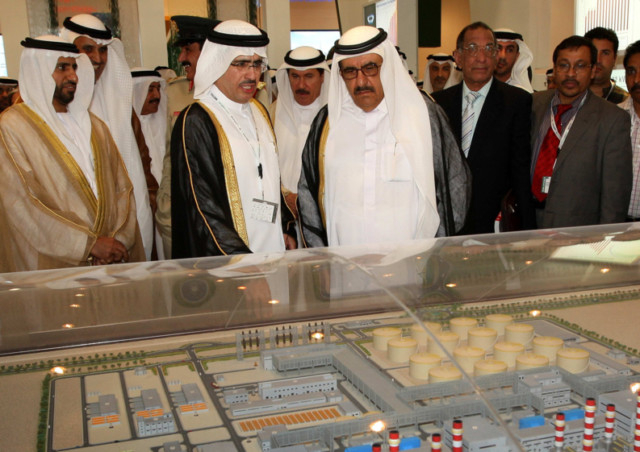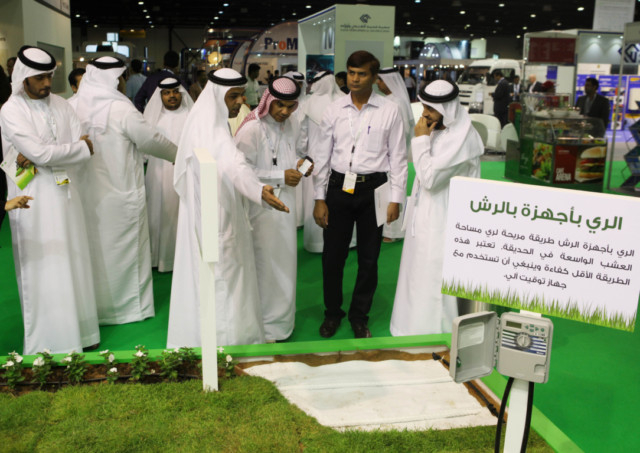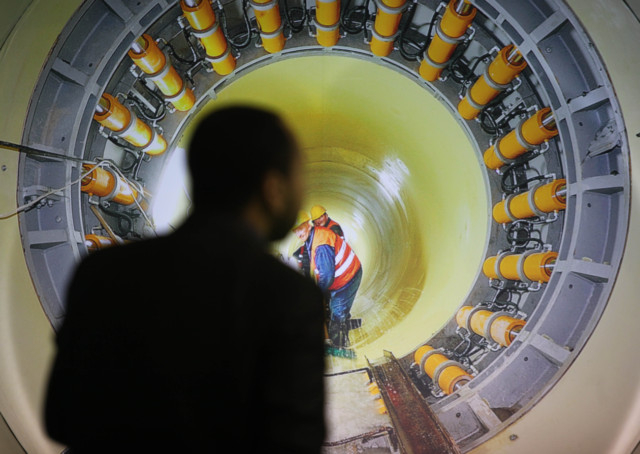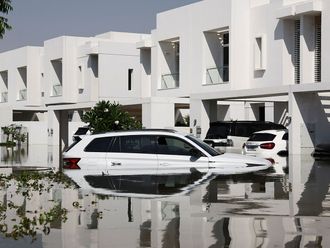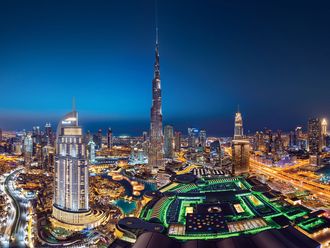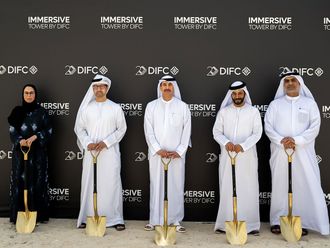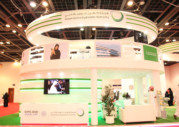
Sustainability has become an important goal for many countries in the Middle East. The UAE and the rest of the GCC are leading other countries in investing in various projects to meet their energy needs through renewable energy.
According to the Middle East and North Africa (Mena) Renewables Status Report 2013, new investments in renewables in the region totalled $2.9 billion (Dh10.65 billion) in 2012, an increase of almost 40 per cent. The UAE plans to spend $102 billion on alternative energy generation by 2020. This makes the UAE one of the most lucrative markets in the world.
Platform for suppliers
The Water, Energy, Technology and Environment Exhibition (Wetex), which takes place April 14-16 at the Dubai International Convention and Exhibition Centre, will present global suppliers and manufacturers of renewable energy solutions the opportunity to grab a piece of the burgeoning market.
“We have been participating in Wetex since its first edition in 1999. The event proved to be a great platform to promote our products,” says Sylvain Hijazi, President of Alstom — Gulf Region, adding that this year his company will present its latest technologies for smart grid management and clean power generation.
Wetex holds far more significance for stakeholders of the green industry today due to the changing demographics of the region, which is seeing massive growth in population and urbanisation, leading to a further increase in energy consumption. The surge in energy demand from a rapidly growing population is forcing the UAE and other countries to invest heavily in capacity building, but at the same time ensuring that much of these investments go into adopting sustainable green technology.
“The governments in the region have stepped up their focus on promoting sustainable development. They are increasingly focusing on renewable energy sources to meet the growing demand, estimated to grow by 7 per cent annually in the coming decade,” says Mohammed Mohaisen, CEO of Power Generation Products and Services Sales at GE Power and Water.
His company is showcasing its advanced products and technologies under the theme Powering the Middle East Efficiently.
Several governments in the region are ramping up efforts to invest in various projects as the population in the Middle East is expected to grow by 31 per cent by 2025, reaching 500 million. Mohaisen says more than 100 renewable energy projects, worth $32.7 billion, have been initiated in the region. This has created a huge market not only in the renewable energy space, but also in the energy efficiency domain.
“Policymakers in the Middle East have realised that sustainability is essential for future growth and can help bring about savings and efficiency,” says Nimer Abu-Ali, Mena Cleantech Leader at Ernst and Young (EY). “It is no longer seen as an expensive option. Given the access to resources such as solar and wind, government support and a compelling business case for efficiency, the region is an important market for green technologies.”
In EY’s Mena Cleantech Survey 2013, majority of respondents consider Saudi Arabia and the UAE as the most attractive markets in the region for clean technology. This is partly because both countries have large financial resources at their disposal for renewable investment.
There is also a huge growth potential in the region especially as global events such as the 2022 Fifa World Cup in Qatar and the World Expo 2020 in Dubai are scheduled in the next few years.
“The preparation for the infrastructure of the cities and countries are integral to the success of these major world events and the investment from the governments is high,” says Benoit Dubarle, Country President at Schneider Electric, Gulf Countries. “This results in further potential and growth in business. A great aspect of this growth is sustainability, which is at the core of the development.”
He says as cities and countries aim to be more efficient, adoption of green technology in large-scale projects also becomes a major goal, as in the case of Masdar City, Abu Dhabi’s sustainable zero-carbon city. Schneider Electric is working closely with Masdar, upgrading its technology to fit into Masdar City’s existing infrastructure.
Renewable energy
As part of a strategy to diversify its energy mix, Dubai Electricity and Water Authority (Dewa) has been introducing new energy sources so that by 2030, 71 per cent of Dubai’s total power output will come from natural gas, while 12 per cent each will be derived from clean coal and nuclear energy, and the remaining 5 per cent from renewable energy.
The transition to renewable energy is one of the key investment areas in the Middle East. The UAE government and industry players understand the huge market potential of the green economy, aside from the environmental benefits such as reducing pollution, improving the quality of the environment and living conditions.
According to the Mena Renewable Status Report, installed photovoltaic capacity in 2012 in the UAE was 22.5 megawatts, the second largest in the region. A further 114MW of solar capacity is in the pipeline. Dewa, for example, is driving renewable energies by such important projects as the Sheikh Mohammad Bin Rashid Al Maktoum Solar Park.
“They have the desire for meaningful changes and are taking up huge long-term projects, with a consistent approach and a steady achievement of set targets. This commitment makes us believe in the region. In realising these large, long-term projects, the government and the industry are aware of the importance of partnerships and knowledge transfers,” says Luc Graré, Senior Vice-President of Sales and Marketing at REC, one of the leading European suppliers of solar panels that opened its new office in Dubai last summer. The company is exhibiting at Wetex for the first time.
Graré says the contribution of solar power to the energy mix will change radically over the next decade. “We expect the Middle East to be a burgeoning market for REC, and it will slowly take off between 2015 and 2016,” he says. “We will initially focus on the UAE and Saudi Arabia, leaving other Middle Eastern countries to be served by distribution channels.”
REC’s Peak Energy Series solar panels recently received “desert-proof” accreditation for passing the Blowing Sand Test by SGS. This makes the product most suitable for the Middle East’s desert conditions.
Besides the urbanisation pressures akin to those in Western countries, cities in the region have different environmental challenges to deal with due to their geographical positioning.
“The demand for cooling is being looked at on a broader scope,” says Ivano Iannelli, CEO of Dubai Carbon Centre of Excellence. “As in other countries with harsh winters, our demand for cooling can be streamlined into more efficient infrastructures. Today, we are working with international energy agencies to benchmark successes in district cooling for replicability and scalability.”
Iannelli, who is participating as a speaker at the World Green Economy Summit taking place concurrently with Wetex, says not all green products are created equal. A green product should be labelled as such against a baseline, or a business as usual scenario.
“Essentially, globalising products does not necessarily mean that a green product in Europe is equally green in the UAE,” he says. “If we take the example of waste, the green label is warded against the ability to recirculate the product after its usable life, and therefore linked to the downstream recyclable infrastructure. But if such structure is not locally available, the shipment emissions compared to the emissions it saves may not be worth the effort.”
Old power plants
At the request of stakeholders, he says, a number of key labels in line with international organisations and best practices will be gradually introduced and will favour carbon emissions as a least common denominator of product efficiency, and the possibility to offset and document the efforts of a company towards its product placement.
Technologically, one of the region’s environmental challenges is to equip the ageing power plants with air quality control systems, selective catalytic reduction as well as low-Nox systems in order to reduce emissions.
“This process was already initiated by Dewa with good results. The region would also have to focus on reaching better efficiency of the power plants,” says Hijazi. “Another challenge is related to renewable energies, with a great potential for Integrated Solar Combined Cycle power plants with Concentrated Solar Power [CSP] tower.”
Also, experts reckon, increasing integration of intermittent renewable energy resources, such as wind and solar, is a big challenge.
Graré says the energy transition is for sure a long-term project. “Stable and reliable conditions for the next ten to 20 years and the ongoing openness for new knowledge transfers and partnerships are the most essential conditions for success,” he says. “Stable regulations, market-based policies, energy subsidies and investments in grid and infrastructure will also decrease the reliance on public and soft financing and foster private investment in the region.”
Experts suggest that any new technology should be evaluated mainly from three perspectives: economic, social and environmental. “Any shortcoming in the three will affect its sustainability on the long term — the technology could be environmentally friendly and could optimise the natural resources, but is not economically feasible. The economic perspective is particularly important to determine the sustainability of any technology,” says Abu-Ali.
This is why platforms such as Wetex and the World Green Economy Summit offer a great opportunity to deliberate on the kinds of green technology needed for this region.
Setting benchmarks
The UAE in particular has been at the forefront to adopt the latest world-class technology and green practices. The country wants to set a benchmark for itself by executing large-scale green projects. Abu Dhabi and Dubai, specifically, have shown their support for renewable energy through many initiatives.
“Estidama, the sustainability initiative of Abu Dhabi, introduces green building laws that address the unique environmental, cultural, social and economic needs of the emirate,” says Abu-Ali. “Abu Dhabi-based Masdar also has the 100MW Shams 1 project, which is the largest CSP project in the Mena.”
Also, Dubai has completed the first phase of a 1,000MW solar park, which could generate 13MW of electricity. It is part of a plan to generate 5 per cent of electricity through solar energy by 2030.
Last year, the Abu Dhabi Fund for Development has made a significant concessional loan of $250 million to support projects in developing countries that are led and backed by the government.
The starting point in any successful implementation is the presence of a policy framework and regulations to attract and involve all the stakeholders. “Dubai has already established the platform to implement the sustainability concept and help meet its energy efficiency targets in 2030,” says Abu-Ali.
There is positive interest in the market for green products. They understand the long-term value that sustainable solutions bring.
Iannelli of Dubai Carbon Centre of Excellence says the GCC has an active business community, which is more receptive to change and capable of understanding the economic value of efficiency. “With this in mind, working towards a green economy in the Middle East is a dynamic process, as the business community generally embraces resource efficiency,” he says.
Furthermore, Dubai has chosen to undertake a market strategy whereas they invited the energy services company industry to participate, hence focusing on a green economy path, rather than a single transactional solution.
“Dubai is quickly scaling up its sustainable development initiatives and captures them under the green economic potential,” say Iannelli. “The diversity of the community will allow for many such activities to be replicated across the globe, and I would not be surprised if in the second half of this decade we will see western countries copy and paste local success stories.”
Green products are gaining more and more attention from consumers worldwide and the UAE is increasingly focusing on renewable energies and sustainability. This seems to be what governments and companies are interested in.
“The recent trends indicate that the UAE is intensively working on its green path and we hope that it will be a long-term one, with stable and reliable conditions for green investments,” concludes Graré.


